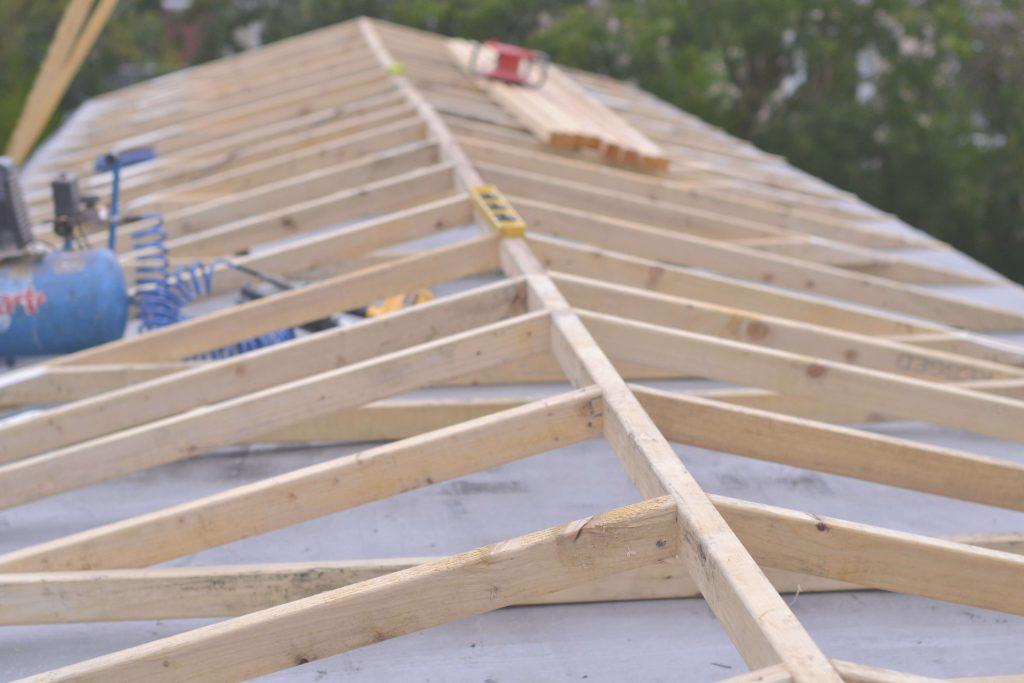Are you tired of dealing with the constant maintenance issues and limitations of a flat roof? Have you been considering replacing it with a pitched roof to enhance the aesthetics and functionality of your home? If so, you’re not alone. Many homeowners opt for this conversion to improve their living spaces and address the common issues associated with flat roofs. In this comprehensive guide, we will explore the process of replacing a flat roof with a pitched roof, the benefits of making this change, and essential considerations to ensure a successful transformation.

Understanding the Need for a Roof Transformation
Flat roofs have their advantages, such as being more accessible for maintenance and offering extra outdoor space. However, they also come with their fair share of challenges. Some common issues with flat roofs include:
- Drainage Problems: Flat roofs often struggle with proper drainage, leading to water pooling and potential leaks.
- Limited Insulation: Insulating a flat roof can be less effective, resulting in higher energy bills and less comfortable living spaces.
- Durability Concerns: Flat roofs are prone to damage from weather, especially in areas with heavy snowfall or rainfall.
- Limited Aesthetic Appeal: Many homeowners prefer the traditional, pitched roof look for their homes.
Given these challenges, it’s not surprising that homeowners consider converting to a pitched roof for long-term benefits.
The Transformation Process
Converting from a flat roof to a pitched roof is a significant undertaking that requires careful planning and execution. Here are the key steps involved:
1. Assessment and Planning:
Before you start any construction work, it’s crucial to assess your existing flat roof’s condition. This evaluation will help determine if the structure can support the weight of a pitched roof. You’ll also need to obtain the necessary permits and approvals from your local authorities.
2. Removal of Existing Roof:
Once you’ve received the green light, the next step is to remove the old flat roof material down to the roof deck. This process may reveal any underlying issues that need to be addressed, such as water damage or rot.
3. Structural Reinforcement:
In some cases, the existing roof structure may not be sufficient to support a pitched roof. If that’s the case, you’ll need to reinforce the structure to meet the new load-bearing requirements. This step is critical to ensure the safety and integrity of your home.
4. Roof Framing:
With the structural reinforcement in place, it’s time to construct the framework for your new pitched roof. This includes adding rafters, trusses, and a ridge beam to create the desired pitch.
5. Roofing Material Installation:
Choose the roofing material that suits your aesthetic and functional preferences. Popular options for pitched roofs include asphalt shingles, metal roofing, and tile roofing. Ensure proper insulation and ventilation to enhance energy efficiency and interior comfort.
6. Finish and Aesthetics:
Once the new roof is in place, complete the project with finishing touches like gutters, fascia, and soffits. Consider adding attic space for storage or as an additional living area.
Benefits of a Pitched Roof
Now that you understand the process, let’s explore the benefits of replacing your flat roof with a pitched one:
- Enhanced Aesthetics: Pitched roofs offer a timeless, classic look that can boost your home’s curb appeal and resale value.
- Better Drainage: Pitched roofs naturally shed water, reducing the risk of leaks and water damage.
- Improved Insulation: Pitched roofs provide better insulation options, helping regulate indoor temperatures and lower energy costs.
- Increased Living Space: Converting your attic space into a usable area can add valuable square footage to your home.
- Long-Term Durability: Pitched roofs are known for their longevity and ability to withstand various weather conditions.
Conclusion
Replacing a flat roof with a pitched roof is a significant project that can transform your home both functionally and aesthetically. However, it’s essential to approach this endeavor with careful planning, professional assistance, and an understanding of the benefits it offers. By taking these steps, you can enjoy a more comfortable, durable, and attractive home for years to come.



Leave a Reply